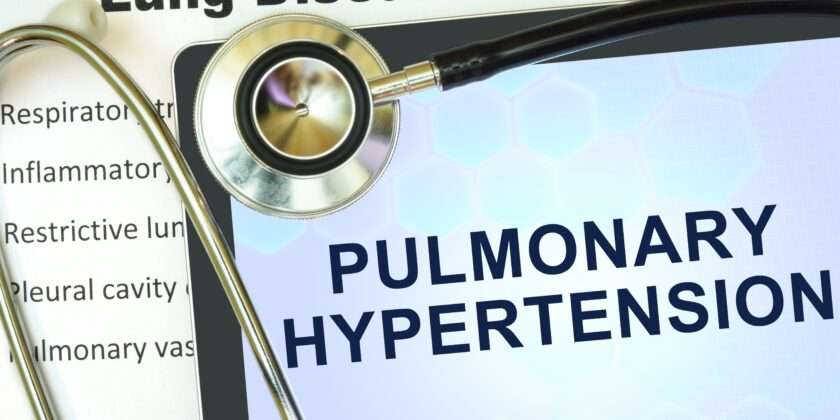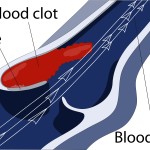Hypertension is a major problem in the Black Community. The Centers for Disease Control and Prevention (CDC) states that 43.0% of black men(1) and 45.7% of black women 20 years and older have high blood pressure. Black Americans develop high blood pressure(2) more often, and at an earlier age than whites and Hispanics do.
Pulmonary hypertension(3) or (PH), is increased pressure in the pulmonary arteries of the lungs. These arteries carry blood from your heart to your lungs to pick up oxygen. The heart pumps blood from the right ventricle(4) to the lungs to get oxygen. Because the blood does not have to travel very far, the pressure on this side of the heart and in the artery taking blood from the right ventricle to the lungs is usually low. It’s usually much lower than your systolic or diastolic blood pressure. Normal pressure is 119/79 or lower according to the National Institutes of Health(5) (NIH). When the pressure in this artery gets too high, the arteries in the lungs can narrow and then the blood does not flow as well as it should resulting in less oxygen in the blood.
How are Americans affected by Pulmonary Hypertension
Pulmonary hypertension(6) can occur in association with many other diseases such as lung disease and heart disease. Some common underlying causes include pulmonary arterial hypertension from some types of congenital heart disease, connective tissue disease, coronary artery disease, high blood pressure, liver disease (cirrhosis), blood clots to the lungs, and chronic lung diseases like emphysema. Genetics also play a role in pulmonary hypertension. Pulmonary hypertension occurs at all ages, and the incidence of it increases with age. Pulmonary hypertension is more common among women, non-Hispanic blacks, and among people aged 75 or older. Heart failure is common in pulmonary hypertension.
These changes make it hard for your heart to push blood through your pulmonary arteries and into your lungs. As a result, the pressure in your arteries rises. Also, because your heart is working harder than normal, your right ventricle becomes strained and weak.
Your heart may become so weak that it can’t pump enough blood to your lungs. This causes heart failure. Heart failure is the most common cause of death in people who have PH.
The CDC says that High blood pressure costs the nation $46 billion each year. This total includes the cost of health care services, medications to treat high blood pressure, and missed days of work.
PH is divided into five groups based on its causes. In all groups, the average pressure in the pulmonary arteries is higher than 25 mmHg at rest or 30 mmHg during physical activity. The pressure in normal pulmonary arteries is 8–20 mmHg at rest. (The mmHg is millimeters of mercury—the units used to measure blood pressure.) Group 1 is called pulmonary arterial hypertension (PAH) and groups 2 through 5 are called pulmonary hypertension (PH).
5 Types of Pulmonary Hypertension(7)
- Group 1 PAH can be inherited, caused by drugs and certain diet medications. It can also be caused by other conditions such as HIV infection, Liver disease, Sickle cell disease, congenital heart disease. Jay Harold has a post on HIV.
- Group 2 PH includes PH with left heart disease. Left heart disease is likely the most common cause of PH. Jay Harold has a post on Heart Disease.
- Group 3 includes PH associated with lung diseases, such as COPD (chronic obstructive pulmonary disease) and interstitial lung diseases. Interstitial lung diseases cause scarring of the lung tissue. Jay Harold has a post on COPD.
- Group 4 includes PH caused by blood clots in the lungs or blood clotting disorders. Jay Harold has a post discussing blood clots.
- Group 5 includes PH caused by various other diseases or conditions. Blood, systemic and metabolic disorders are part of Group 5 PH.
Prevention and Treatment
While not all pulmonary hypertension can be prevented, efforts to prevent high blood pressure, coronary heart disease, chronic liver disease, and chronic lung disease from tobacco use can help prevent pulmonary hypertension in some patients states the CDC.
At this time, there is no cure for pulmonary hypertension. There are many different types of treatments for pulmonary hypertension including pills, inhaled medication, medicine is given through the veins under your skin, medicine to reduce swelling in your feet (diuretics), and oxygen.
Additional information can be found at the Pulmonary Hypertension Association(8) and the National Heart, Lung, and Blood Institute(8).
Jay Harold is always looking to improve your Health and Wealth. Click this link to get free Health and Wealth information to improve your life. Play the free “Slow Roll Through Civil Rights” Game found on the Jay Harold website. Enjoyed this post? Share it and read more here.

Bibliography
- http://www.cdc.gov/bloodpressure/facts.htm
- http://www.cdc.gov/bloodpressure/facts.htm
- https://www.nhlbi.nih.gov/health/health-topics/topics/pah
- http://dictionary.reference.com/browse/ventricle
- https://www.nlm.nih.gov/medlineplus/highbloodpressure.html
- https://www.nhlbi.nih.gov/health/health-topics/topics/pah/types
- http://www.cdc.gov/dhdsp/data_statistics/fact_sheets/fs_pulmonary_hypertension.htm
- https://www.phassociation.org/
- http://www.nhlbi.nih.gov/health/health-topics/topics/pah/livingwith






